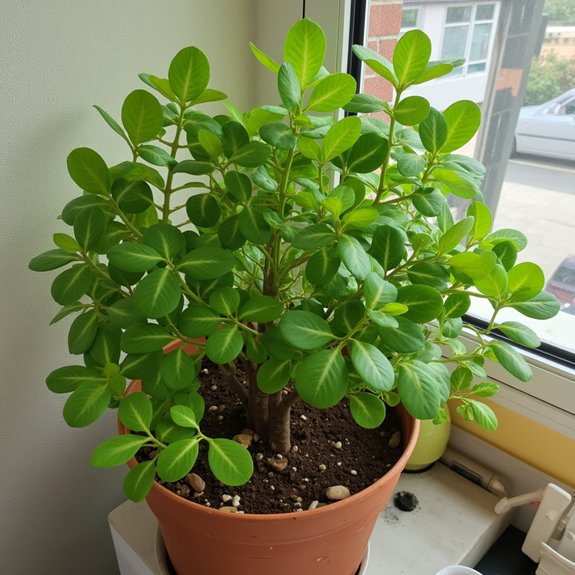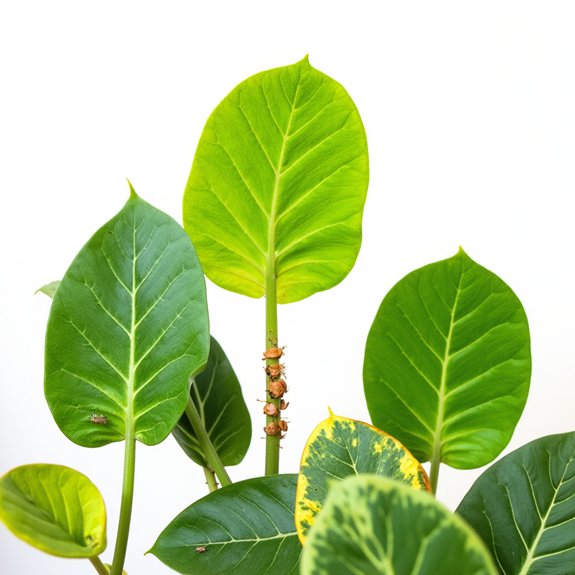Plant enthusiasts around the world have discovered that Chinese Money Plants produce an average of 15-20 offspring during their lifetime, making them one of the most generous houseplants for propagation. These coin-shaped beauties, scientifically known as Pilea Peperomioides, require specific care techniques that many newcomers overlook. Most people water them incorrectly, place them in poor lighting conditions, and miss critical signs of distress. Understanding their unique needs transforms ordinary plant care into a rewarding journey of continuous growth and sharing.
Contents
Origins and Discovery of Pilea Peperomioides

Though the Chinese Money Plant feels like a modern Instagram darling, Pilea peperomioides actually has deep roots stretching back over a century. Scottish botanist George Forrest first collected this species in 1906, establishing its botanical classification within the Urticaceae family. The plant’s historical significance grew when Norwegian missionary Agnar Espegren brought it to Scandinavia in 1946, sparking its spread across Europe.
Native to southwest Sichuan and west Yunnan provinces in China, this unique houseplant remained relatively obscure until Kew Magazine published its first image in 1984, launching its journey toward modern popularity.
Finding and Propagating Your First Plant
With its growing popularity established, finding a Chinese Money Plant has become both easier and more challenging. While nurseries now commonly stock them, they frequently sell out due to high demand. Smart plant sourcing involves checking online retailers or joining local plant groups where enthusiasts share availability tips.
Once you’ve secured your Pilea, propagation techniques make expanding your collection simple and cost-effective. Watch for small offshoots appearing at the plant’s base or along stems. These babies can be gently separated and potted independently, creating new plants without additional purchases—a strategy savvy growers use regularly.
Essential Growing Conditions and Daily Care

After securing your Chinese Money Plant, creating the right environment becomes essential for long-term success. Light requirements center on bright, indirect sunlight—think near a window with sheer curtains. Direct sun scorches those pancake-shaped leaves, while low light stunts growth completely.
Your watering schedule should follow the finger test method. Stick your finger one inch deep into soil; if it’s dry, water thoroughly until drainage occurs. This typically means watering every 7-10 days, though frequency varies with seasons and humidity levels.
Maintain temperatures above 50°F and humidity above 40% for ideal health.
Repotting Techniques and Troubleshooting Issues
As your Chinese Money Plant matures, repotting becomes necessary to prevent rootbound conditions and maintain healthy growth. Annual repotting until full size works best, with spring to early summer offering ideal repotting timing. Check root health by gently removing the plant from its container—healthy roots appear white or cream-colored, while brown or mushy roots signal problems.
Common issues include wilting from over or underwatering, leaf drop from excessive moisture, and curling leaves from direct sunlight or drafts. Brown leaves typically indicate underwatering, low humidity, sunburn, or overfertilization. White spots are harmless mineral deposits that don’t require treatment.
Managing Pests and Plant Health

Three main pests threaten Chinese Money Plants: aphids, mealybugs, and spider mites. These tiny invaders cluster on leaves, sucking plant juices and weakening growth. Effective pest prevention starts with regular inspection, checking undersides of leaves weekly for early detection.
Treat infestations immediately using horticultural oil or insecticidal soap, applying every 3-5 days until pests disappear. While plant diseases rarely affect Pileas, maintaining proper watering prevents root rot, the most common health issue. Keep humidity above 40% and guarantee good air circulation around plants to discourage pest establishment and promote overall plant health.
Maximizing Benefits in Your Living Space
Beyond keeping pests at bay, Chinese Money Plants offer remarkable benefits that transform living spaces into healthier, more vibrant environments. These green companions filter indoor air quality by removing toxins, creating fresher atmospheres throughout homes. Their 12-inch mature height makes them perfect for aesthetic arrangements on shelves, desks, or windowsills.
Many cultures believe Pileas bring good luck and prosperity to households. Their low-maintenance nature suits beginners perfectly, requiring minimal care while delivering maximum visual impact. The glossy, round leaves add instant liveliness to any room style, from modern minimalist to cozy traditional spaces, making them versatile decorative elements.
Advanced Tips for Long-Term Success
Once your Chinese Money Plant reaches maturity, maintaining its health requires strategic adjustments to your care routine. Seasonal adjustments become essential for peak growth. During winter months, reduce watering frequency by half, as plants naturally slow their metabolism. Move your Pilea closer to windows for maximum light exposure when days shorten.
For enhanced plant aesthetics, rotate your container weekly to guarantee even growth patterns. Mature plants benefit from root division every two years, creating fresh specimens while preventing overcrowding. Monitor humidity levels closely during heating seasons, using pebble trays when indoor air drops below 40%. These practices promote decades of thriving growth.
